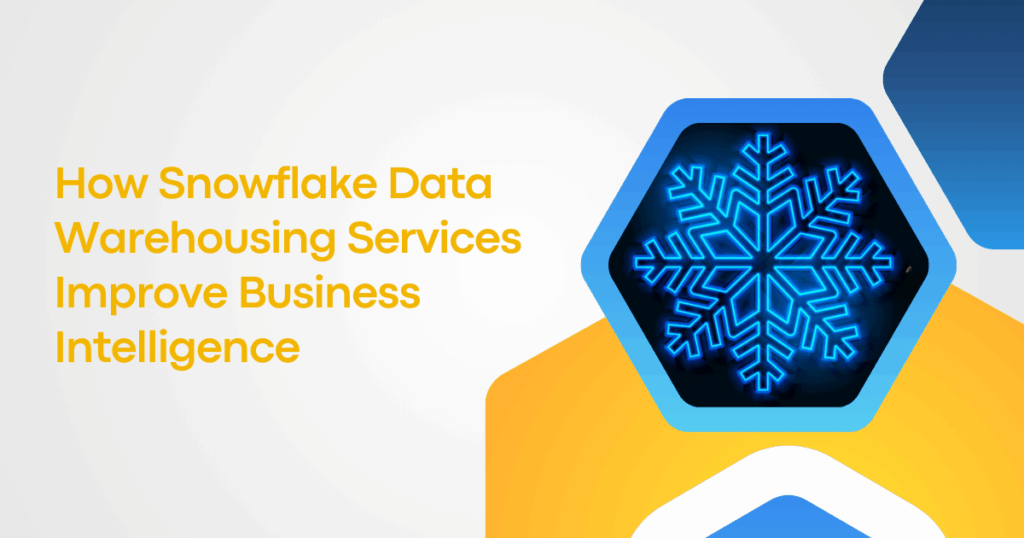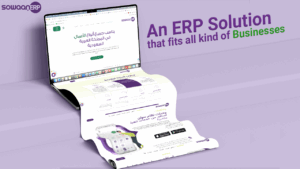In today’s data-driven world, businesses require robust systems to manage and analyze vast amounts of data. Snowflake Data Warehousing offers a cloud-based solution that enhances business intelligence (BI) capabilities. By providing scalable storage, high-performance computing, and seamless integration, Snowflake enables organizations to derive actionable insights from their data efficiently.
What Is Snowflake Data Warehousing?
Snowflake Data Warehousing is a cloud-native platform designed for data storage, processing, and analysis. Unlike traditional data warehouses, Snowflake separates compute and storage resources, allowing for independent scaling. This architecture ensures optimal performance and cost efficiency. Snowflake’s multi-cloud support enables deployment across various platforms, including AWS, Azure, and Google Cloud, offering flexibility and avoiding vendor lock-in.
Key Features of Snowflake Enhancing Business Intelligence
1. Scalability and Elasticity
Snowflake’s architecture allows businesses to scale compute and storage resources independently. This elasticity ensures that organizations can handle varying workloads without compromising performance. Whether it’s processing large datasets during peak hours or scaling down during off-peak times, Snowflake adapts to meet the demands of BI applications.
2. High-Performance Query Execution
Snowflake employs a columnar storage format and a massively parallel processing (MPP) engine, enabling fast query execution. This design is particularly beneficial for BI tasks that involve complex aggregations and filtering operations. The result is reduced query latency and timely delivery of insights.
3. Support for Structured and Semi-Structured Data
Snowflake natively supports both structured data (e.g., relational tables) and semi-structured data (e.g., JSON, Avro, Parquet). This capability allows organizations to analyze diverse data types without the need for complex transformations, streamlining the data preparation process for BI activities.
4. Zero-Copy Cloning
The zero-copy cloning feature in Snowflake enables users to create instant, space-efficient copies of databases, schemas, or tables. This is particularly useful for development, testing, and analytics, as it allows teams to work with real-time data without impacting production environments.
5. Time Travel and Data Recovery
Snowflake’s Time Travel feature allows users to access historical data at different points in time. This capability is invaluable for auditing, recovery, and compliance purposes. Additionally, Snowflake provides a Fail-safe mechanism to recover data after the Time Travel retention period has expired, offering an extra layer of data protection.
6. Secure Data Sharing
Snowflake facilitates secure and governed data sharing across organizations without the need to copy or move data. This feature promotes collaboration and ensures that stakeholders have access to consistent and up-to-date information, enhancing decision-making processes.
7. Automatic Query Optimization
Snowflake automatically optimizes query execution plans based on data size and query complexity. This ensures that queries are executed quickly and efficiently, reducing the need for manual tuning and improving the overall performance of BI applications.
Benefits of Snowflake Data Warehousing for Business Intelligence
1. Cost Efficiency
Snowflake’s on-demand pricing model allows businesses to pay only for the resources they use. By separating compute and storage costs, organizations can optimize expenses and avoid over-provisioning. This cost-effective approach is particularly beneficial for BI applications with fluctuating workloads.
2. Enhanced Collaboration
The secure data sharing capabilities of Snowflake enable organizations to collaborate effectively with external partners, vendors, and stakeholders. By providing controlled access to data, businesses can ensure that all parties have the information they need to make informed decisions.
3. Accelerated Time to Insights
With features like high-performance query execution, zero-copy cloning, and support for diverse data types, Snowflake accelerates the process of transforming raw data into actionable insights. This speed is crucial for businesses that need to respond quickly to market changes and customer demands.
4. Simplified Data Management
Snowflake’s architecture simplifies data management by separating compute and storage resources and automating tasks such as query optimization and data recovery. This reduces the administrative burden on IT teams and allows them to focus on strategic initiatives.
Real-World Applications of Snowflake in Business Intelligence
1. Retail Industry
Retailers use Snowflake to analyze customer behavior, inventory levels, and sales trends. By integrating data from various sources, businesses can gain a comprehensive view of operations and make data-driven decisions to optimize pricing, promotions, and supply chain management.
2. Healthcare Sector
Healthcare organizations leverage Snowflake to analyze patient data, track treatment outcomes, and manage resources. The platform’s support for semi-structured data allows for the integration of electronic health records (EHRs) and other unstructured data sources, enhancing the quality of care and operational efficiency.
3. Financial Services
Financial institutions utilize Snowflake to monitor transactions, assess risk, and comply with regulatory requirements. The platform’s scalability and performance enable real-time analytics, facilitating timely detection of fraudulent activities and informed decision-making in areas like lending and investment.
4. Manufacturing Industry
Manufacturers employ Snowflake to analyze production data, monitor equipment performance, and manage supply chains. By consolidating data from IoT devices, sensors, and enterprise resource planning (ERP) systems, businesses can identify inefficiencies and implement predictive maintenance strategies.
Challenges and Considerations of Using Snowflake Data Warehousing Services
Although Snowflake Data Warehousing Services offer powerful features and benefits, organizations should address certain challenges to get the best results. Each area—security, governance, and integration—requires planning and technical oversight to avoid operational issues or compliance risks.
1. Data Security
Security is a top concern when using cloud-based platforms like Snowflake. Businesses must protect sensitive information such as personal data, financial records, and proprietary information. Snowflake provides encryption at rest and in transit by default, but responsibility for secure architecture is shared between Snowflake and the organization.
Key considerations include:
- Access Controls: Businesses must define roles and user permissions to ensure that only authorized users can access specific data sets. Implementing Role-Based Access Control (RBAC) is essential for managing different access levels.
- Encryption Key Management: While Snowflake manages keys, some enterprises prefer to use their own customer-managed keys (CMK) for added control.
- Compliance: Organizations in healthcare, finance, or government must comply with regulations such as HIPAA, GDPR, or PCI DSS. Snowflake supports these standards, but businesses are still responsible for using the features correctly.
For example, a healthcare company storing patient records in Snowflake must configure HIPAA-compliant security settings, including audit trails and limited access by user role.
2. Data Governance
Data governance involves managing data quality, ownership, privacy, and compliance throughout the data lifecycle. Poor governance can lead to inconsistencies, data duplication, and policy violations.
Important governance issues include:
- Data Ownership: It must be clear who is responsible for different data sets. Without this clarity, data updates may conflict, or outdated information might persist.
- Data Quality Control: Businesses must establish validation rules and cleaning pipelines before loading data into Snowflake. This ensures that only clean, consistent data is used in business intelligence dashboards and reports.
- Audit and Lineage Tracking: Teams should implement tracking systems that show how data is created, modified, and used. This visibility helps during compliance audits and troubleshooting data issues.
- Retention and Archiving: Snowflake offers Time Travel and Fail-safe features, but businesses must plan how long they need to keep data and what happens after it expires.
Without strong governance, even powerful data warehousing tools like Snowflake can produce misleading analytics due to incomplete or outdated data.
Conclusion
Snowflake Data Warehousing Services provide a robust foundation for business intelligence initiatives. With features like scalability, high-performance query execution, support for diverse data types, and secure data sharing, Snowflake enables organizations to transform data into actionable insights efficiently. By leveraging Snowflake’s capabilities, businesses can enhance decision-making, foster collaboration, and maintain a competitive edge in the market.






